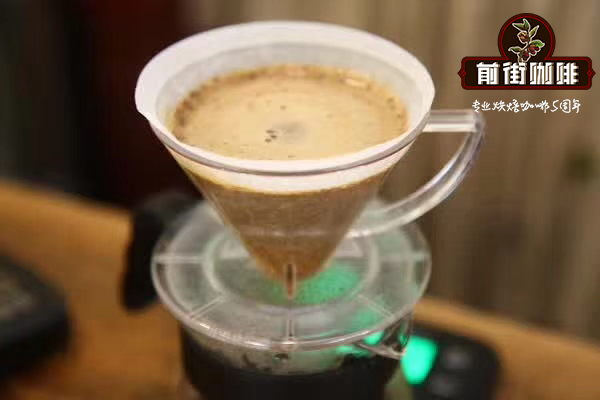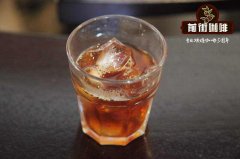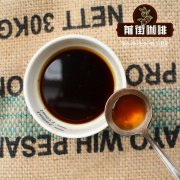Coffee extraction: is there a formula for coffee extraction? On the extraction time of Coffee extraction rate

Professional coffee knowledge exchange more coffee bean information please follow the coffee workshop (Wechat official account cafe_style)
Extraction can be said to be the most important but least understood part of coffee brewing. Extraction represents everything. You can't even get a cup of coffee without extraction.
Extraction is the use of water to bring out the substance of coffee.
It's easy to talk, but it's much harder to integrate and apply.
Instead of discussing in depth the effects of coffee oils and trace components during extraction, we will first discuss more practical and appropriate information, such as how to taste extracted coffee and be proficient, as for chemical analysis later.
A lot of things happen when coffee is mixed with water, and the easiest thing to understand is that the water dissolves a lot of the flavor of coffee, which is almost the flavor you drink in the coffee cup. Only very fine coffee powder will affect the taste, but the fine powder is not considered in the extraction, because the fine powder only floats in the water during the extraction.
Roasted coffee beans contain about 28% by weight and can be dissolved in water, which means that about 28% of the substances in roasted coffee beans can be extracted into the water. Almost all of the rest is the fiber of coffee beans and the tissue of seeds. Water is a good medium for soluble matter, but it still needs some external help. If you throw the whole coffee bean into hot water, the extract is much less than the powder, because the structure of the coffee bean is very dense and complex. Water cannot pass through the whole coffee bean and dissolve the taste. So we must increase the surface area of coffee beans and "open it" so that the water can bring out the taste of coffee. Coffee beans can be easily extracted by using a bean grinder, the coffee beans can be ground into powder, and the surface area can be increased so that the water can be effective.
Similarly, we can't grind a lot of coffee beans and extract a little bit. In order to avoid these overextracted flavors, under-extracted coffee tastes just as scary (sometimes worse than over-extraction). Most people understand that extraction is like a two-way road, and we always try to find a balance in this way to avoid over-extraction or under-extraction.
Over-extracted coffee
The over-extracted coffee represents bringing out too much soluble matter in the coffee, and the result of this extraction is a bad flavor.
Imagine a boutique espresso with an extraction time of 40-50 seconds. Don't pretend you haven't tasted this exquisite coffee. Such coffee can be bitter, dry and empty, which are the three most obvious characteristics of over-extracted coffee.
Concentration (%): weight of extracted coffee powder (g) / coffee liquid capacity (ml)
The concentration represents the intensity of the sour, sweet, bitter and salty taste of coffee. The concentration of follicular coffee is less than 1.15% (11500ppm) and the flavor is very freshwater; when the concentration is higher than 1.55% (15500ppm), most people will find the taste too heavy to taste.
Extraction rate (%): weight of extracted coffee powder (g) / weight of coffee powder (g)
The extraction rate represents the "quality" of the sour, sweet, bitter and salty taste of coffee. More than 22% of the extraction is prone to bitter idleness and throat biting, while less than 18% is prone to stiff acidity and astringency (commonly known as grass taste).
Important Notice :
前街咖啡 FrontStreet Coffee has moved to new addredd:
FrontStreet Coffee Address: 315,Donghua East Road,GuangZhou
Tel:020 38364473
- Prev

Coffee knowledge: the Environmental cycle process of Natural conditions for Coffee growth
Professional coffee knowledge exchange more coffee bean information please pay attention to the coffee workshop (Wechat official account cafe_style) Coffee planting conditions temperature between 1500mm and 25mm climate, and the annual rainfall must reach 1500mm to 2000mm at the same time, to be able to match the flowering cycle of coffee trees, of course, in addition to the seasonal rainfall, there is also fertile soil.
- Next

Coffee Science: the Flavor Source and volatility of Coffee
Professional coffee knowledge exchange more coffee bean information please pay attention to the coffee workshop (Wechat official account cafe_style) in a broad sense, taste includes five senses (vision, hearing, smell, taste, touch) transmitted to the cerebral cortex, and handed over to the central nervous system to process, so our five senses will be the medium of taste signals; but in a narrow sense, we usually think that
Related
- How did the Salvadoran coffee industry develop in Central America?
- What exactly does the golden cup extraction of coffee mean?
- The Origin of Coffee flower
- [2023 Starbucks World Earth Day] there are more meaningful things besides free Starbucks coffee!
- What kind of coffee is there in Spain? 9 Flavors of Spanish Coffee
- Aromatic African coffee| Kenya's coffee culture and historical production area
- Liberica Coffee Bean knowledge: the characteristics of Liberian Coffee beans of the three original species of Coffee beans
- The origin and formula of Spanish latte introduces the taste characteristics of Bombon coffee in Valencia, Spain.
- How to adjust the solution of over-extracted coffee
- What is the tasting period of coffee beans? What is the period of coffee and beans? How should coffee wake up and raise beans?

